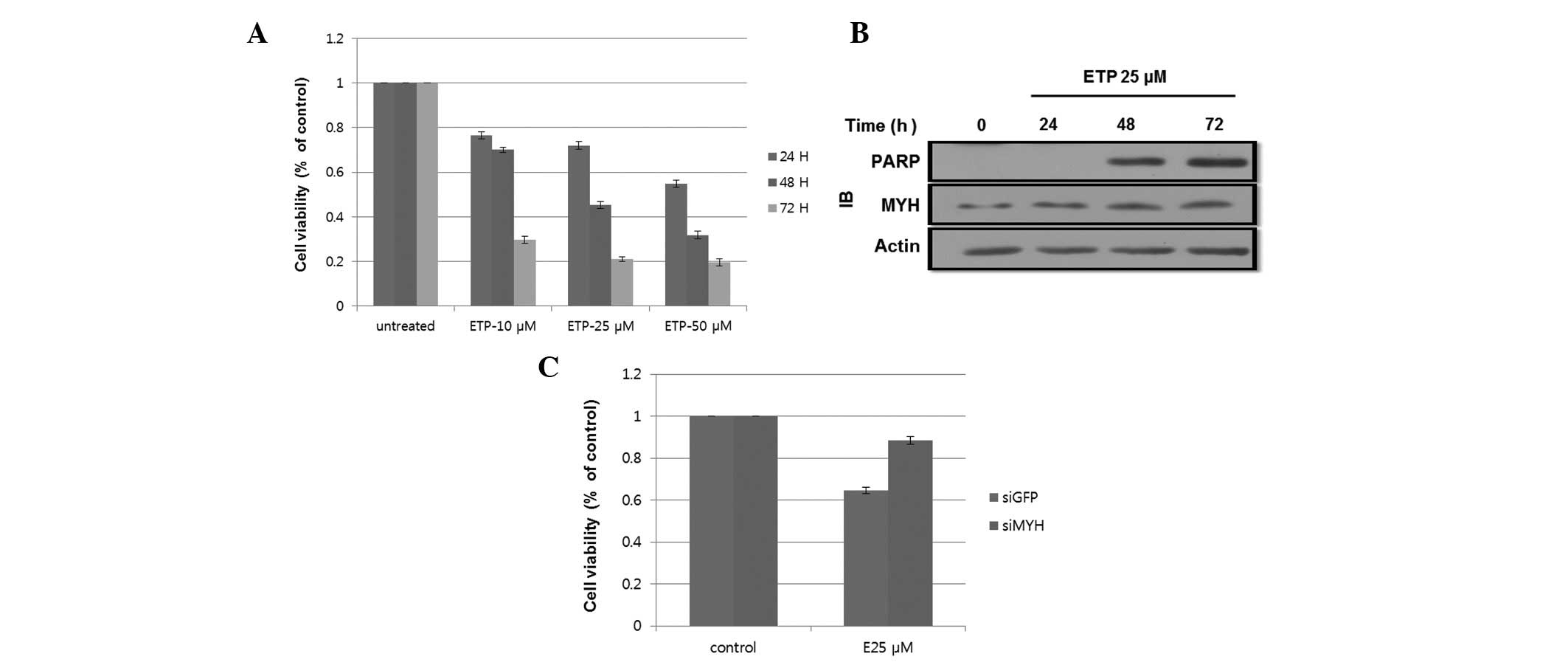|
1.
|
JW HarperSJ ElledgeThe DNA damage
response: ten years afterMol Cell28739745200718082599
|
|
2.
|
J BarketJ BartkovaJ LukasDNA damage
signaling guards against activated oncogenes and tumor
progressionOncogene2677737779200710.1038/sj.onc.121088118066090
|
|
3.
|
BB ZhouSJ ElledgeThe DNA damage response:
putting checkpoint in
perspectiveNature408433439200010.1038/3504400511100718
|
|
4.
|
SP JacksonJ BartekThe DNA-damage response
in human biology and
diseaseNature46110711078200910.1038/nature0846719847258
|
|
5.
|
A SancarLA Lindsey-BoltzK Unsal-KaçmazS
LinnMolecular mechanisms of mammalian DNA repair and the DNA damage
checkpointsAnnu Rev
Biochem733985200410.1146/annurev.biochem.73.011303.07372315189136
|
|
6.
|
RT AbrahamPI 3-kinase related kinases:
‘big’ players in stress-induced signaling pathwaysDNA
repair38838872004
|
|
7.
|
PJ HurleyF BunzATM and ATR: components of
an integrated circuitCell
cycle6414417200710.4161/cc.6.4.388617312392
|
|
8.
|
KA CimprichD CortezATR: an essential
regulator of genome integrityNat Rev Mol Cell
Biol9616628200810.1038/nrm245018594563
|
|
9.
|
M MäkiniemiT HillukkalaJ TuusaK ReiniM
VaaraD HuangH PospiechI MajuriT WesterlingTP MäkeläJE SyväojaBRCT
domain-containing protein TopBP1 Functions in DNA replication and
damage responseJ Biol Chem2763039930406200111395493
|
|
10.
|
V GarciaK FuruyaAM CarrIdentification and
functional analysis of TopBP1 and its homologsDNA
Repair412271239200510.1016/j.dnarep.2005.04.00115897014
|
|
11.
|
IA MankeDM LoweryA NguyenMB YaffeBRCT
repeats as phosphopeptide-binding modules involved in protein
targetingScience302636639200310.1126/science.108887714576432
|
|
12.
|
X YuCC ChiniM HeG MerJ ChenThe BRCT domain
is a phosphor-protein binding
domainScience302639642200310.1126/science.108875314576433
|
|
13.
|
S DelacroixJM WagnerM KobayashiK
YamamotoLM KarnitzThe Rad9-Hus1-Rad1 (9-1-1) clamp activates
checkpoints signaling via TopBP1Genes
Dev2114721477200710.1101/gad.154700717575048
|
|
14.
|
SH HahmJH ParkSI KoYR LeeIS ChungJH
ChungLW KangYS HanKnock-down of human MutY homolog (hMYH) decreases
phosphorylation of checkpoint kinase 1 (Chk1) induced by
hydroxyurea and UV treatmentBMB
Rep44352357201110.5483/BMBRep.2011.44.5.35221615992
|
|
15.
|
PJ LuncsfordDY ChangG ShiK BernsteinA
MadabushiDN PattersonAL LuEA TothA structural hinge in eukaryotic
MutY homologues mediates catalytic activity and Rad9-Rad1-Hus1
checkpoint complex interactionsJ Mol
Biol403351370201010.1016/j.jmb.2010.08.045
|
|
16.
|
Y GuA ParkerTM WilsonH BaiDY ChangAL
LuHuman MutY homolog, a DNA glycosylase involved in base excision
repair, physically and functionally interacts with mismatch repair
proteins human MutS homolog 2/Human MutS homolog 6J Biol
Chem2771113511142200210.1074/jbc.M108618200
|
|
17.
|
N PablaZ MaMA McllhattonR FishelZ
DonghMSH2 recruits ATR to DNA damage sites for activation during
DNA damage-induced apoptosisJ Biol
Chem2861041110428201110.1074/jbc.M110.21098921285353
|
|
18.
|
RD KolodnerGT MarsischkyEukaryotic DNA
mismatch repairCurr Opin Genet
Dev98996199910.1016/S0959-437X(99)80013-6
|
|
19.
|
P ModrichR LahueMismatch repair in
replication fidelity, genetic recombination, and cancer biologyAnnu
Rev
Biochem65101133199610.1146/annurev.bi.65.070196.0005338811176
|
|
20.
|
AB ClarkF ValleK DrotschmannRK GaryTA
KunkelFunctional interaction of proliferating cell nuclear antigen
with MSH2-MSH6 and MSH2-MSH3 complexesJ Biol
Chem2753649836501200010.1074/jbc.C00051320011005803
|
|
21.
|
H Flores-RozasD ClarkRD
KolodnerProliferation cell nuclear antigen and Msh2p-Msh6p interact
to form an active mispair recognition complexNat
Genet26375378200010.1038/8170811062484
|
|
22.
|
NO KarpinichM TafaniRJ RothmanMA RussoJL
FarberThe course of Etoposide-induced apoptosis from damage to DNA
and p53 activation tomitochondrial release of cytochrome cJ Biol
Chem2771654716552200210.1074/jbc.M11062920011864976
|
|
23.
|
R RossiMR LidonniciS SozaG BiamontiA
MontecuccoThe dispersal of replication proteins after Etoposide
treatment requires the cooperation of Nbs1 with ataxia
telangiectasis Rad3-related/Chk1 pathwayCancer
Res6616751683200610.1158/0008-5472.CAN-05-2741
|
|
24.
|
Y XiaP OngusahaSW LeeYC LiouLoss of Wip1
sensitizes cells to stress- and DNA damage-induced apoptosisJ Biol
Chem2841742817437200910.1074/jbc.M109.00782319395378
|
|
25.
|
S OkaY NakabeppuDNA glycosylase encoded by
MUTYH functions as a molecular switch for programmed cell death
under oxidative stress to suppress tumorigenesisCancer
Sci102677682201110.1111/j.1349-7006.2011.01869.x21235684
|













